Porcelain has been a cherished form of art and utility for centuries, produced by various cultures around the world. In this guide, we will explore how to differentiate between English and Vietnamese porcelain, two distinct traditions with their own unique characteristics and histories. Understanding the nuances of each can enhance one’s appreciation for these exquisite works of craftsmanship.
Vietnamese ceramics and some typical types of ceramics
Overview of Vietnamese ceramics
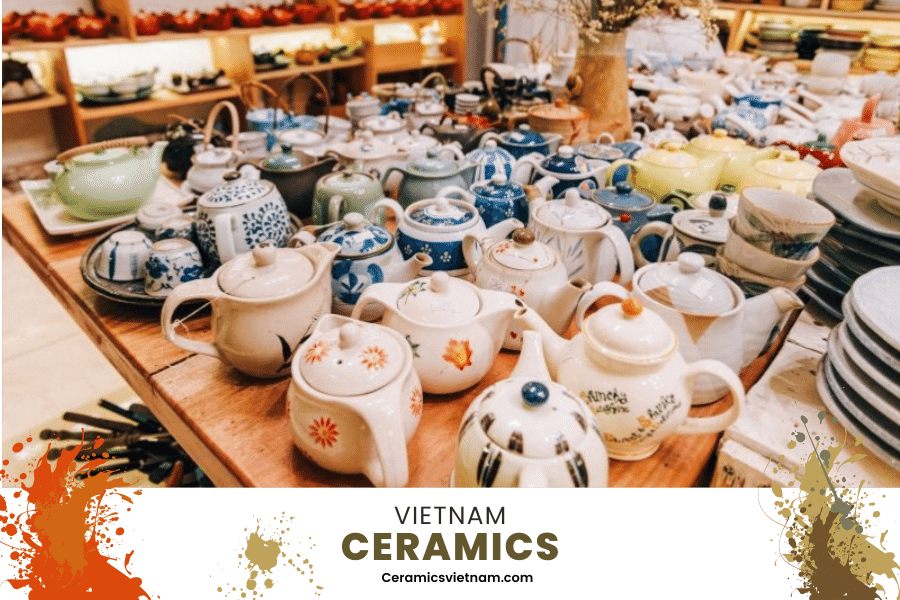
Guide to distinguishing between English and Vietnamese porcelain
In Vietnam, ancient raw pottery dating back approximately 6,000 years has been found, with items made from clay mixed with crushed shell powder without glazing, using woven basket molds, and characterized by dark brown or light brown colors as the first pottery artifacts.
The Sinicization process by China in the 1600s significantly influenced Vietnam’s pottery production techniques and styles.
After breaking free from Sinicization, both northern and southern Vietnamese pottery developed products with distinct national characteristics, exemplified by the emergence of Bat Trang pottery village (Hanoi) with its jade-glazed pottery, crackle-glazed pottery, blue-and-white porcelain, and many exquisite bone china products with intricate floral patterns in bright, vibrant colors inherited from the essence of Limoges porcelain (France) in Saigon.
Some typical types of Vietnamese porcelain
Chu Dau Porcelain
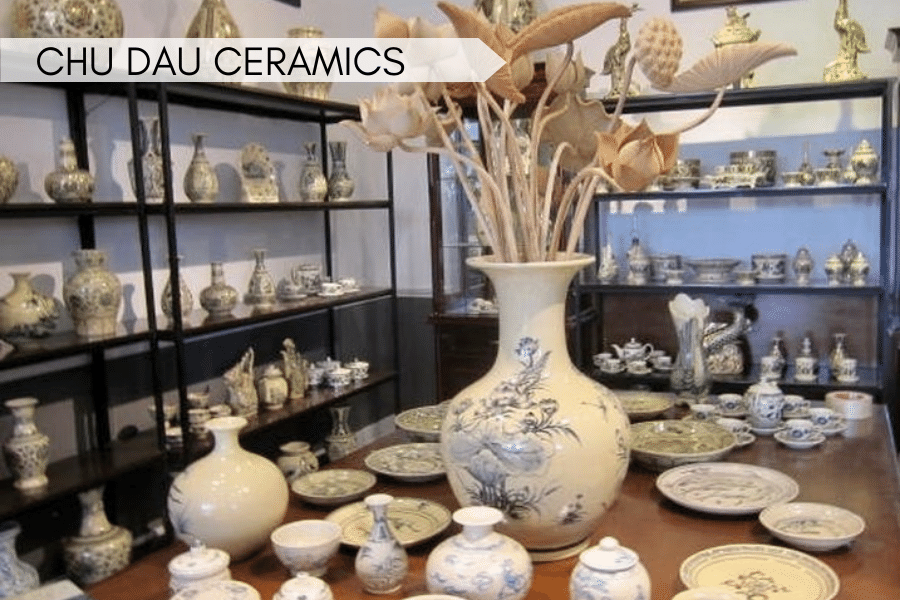
Guide to distinguishing between English and Vietnamese porcelain
Chu Dau Porcelain is the brand of Chu Dau pottery village, Hai Duong province. Chu Dau pottery has been recorded to appear around 550 years ago, from the late 14th to the early 15th century, when it flourished with the emergence of a series of diverse glazes and decorative patterns.
The most famous among Chu Dau pottery are the white-glazed and blue-glazed products featuring patterns that mimic the peaceful rural life of Vietnam, rich in national identity such as grass, flowers, birds… turning Chu Dau pottery into one of the unique types of Vietnamese porcelain, difficult to be confused with other pottery brands.
Bat Trang Porcelain
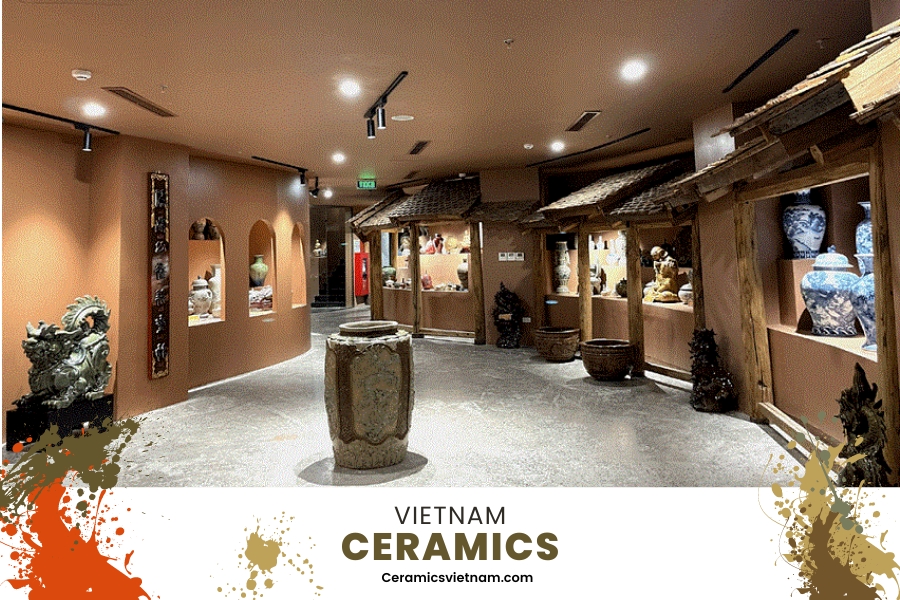
Guide to distinguishing between English and Vietnamese porcelain
Bat Trang pottery village, also known as Bat Trang pottery village, is located on the banks of the Red River, now in Bat Trang commune, Gia Lam district, Hanoi.
The Red River, also known as Cai River, Ca River, Thao River, Nhi Ha, Nhi Ha River, is a waterway with a total length of 1,149 kilometers. It originates in Yunnan, China, flowing through northern Vietnam and eventually emptying into the Gulf of Tonkin. Within Vietnam, its length is 556 kilometers. This river holds significant cultural importance for Vietnam’s wet rice civilization
According to many historical documents, Bat Trang pottery village was formed around the 14th – 15th centuries, with the 15th century being a period of prosperity when it was chosen by the royal court as the place to supply tribute items for the Ming dynasty, and continued to thrive in the 16th century with high-end designs to serve the needs of the nobility and the religious purposes of the Vietnamese people at that time.
Compared to Chu Dau pottery, Bat Trang pottery impresses with its diverse designs, exquisite appearance from techniques such as embossed engraving, brown glaze, blue glaze, crackle glaze… with familiar patterns depicting rural scenes, banyan trees by the well, daily activities, myths, ancient stories… that have been associated with Vietnam for a long time.
English porcelain and some representative brands

Guide to distinguishing between English and Vietnamese porcelain
An overview of british porcelain
Before the 18th century, British porcelain essentially consisted of Chinese porcelain products transported via maritime routes and the Silk Road to England. British porcelain at this time was also considered products for the aristocracy and the British royal family due to their high cost.
The rise of the Afternoon Tea tradition in the 18th century had a significant impact on the British porcelain industry, driving British potters and porcelain brands to quickly and continuously research formulas for making tea sets, teapots, and cups to meet the demand of consumers in England.
Starting from sets with less refined glazes compared to Chinese porcelain due to the invention by German alchemist Bertger in 1708, to the creation of bone china by Thomas Frye in 1748, British porcelain has continuously evolved in both materials and designs.
In terms of style, as the British value elegance, British porcelain designs lean towards natural patterns such as flowers and leaves, with subtle and sophisticated colors.
Some famous British porcelain brands
Wedgwood
The British porcelain brand Wedgwood was established in 1759 by Josiah Wedgwood, hailed as the “Father of English Pottery.” Born into a family with a tradition of pottery-making in Burslem, Staffordshire, England, along with innate talent and a love for porcelain, Josiah Wedgwood began his illustrious pottery career by apprenticing at another small pottery workshop in town.
With the famous motto “This will not do for Wedgwood,” Josiah Wedgwood was renowned for his strictness and meticulous attention to detail in design.
Through relentless efforts in researching and crafting secret porcelain materials, Josiah Wedgwood left a strong mark with collections like Jasper, black Basalt, and notably Queen’s Ware – a collection of cream-colored pottery that earned Josiah Wedgwood the trust of Queen Charlotte of England and the prestigious title of “Queen’s Potter.”
Exquisite and revered by many British potters, Wedgwood porcelain products are the choice of royalty, heads of state, and the most luxurious venues worldwide, such as the Vatican, the Kremlin, and the White House.
Royal Albert
Officially established in 1904, the story of Royal Albert began in 1896 when Thomas Wild opened a family pottery shop in Longton – one of the six towns comprising Stoke-on-Trent, the Potteries of the World. With over 118 years of formation and development, Royal Albert porcelain products are still beloved for their elegant, romantic, yet soft designs.
The English countryside garden with roses, forget-me-nots… is a recurring symbol in Royal Albert porcelain products, making it a brand representative of the exquisite and elegant beauty of British porcelain as well as the honor of receiving the prestigious Royal Warrant like Wedgwood porcelain.
Distinguishing Vietnamese and British Porcelain
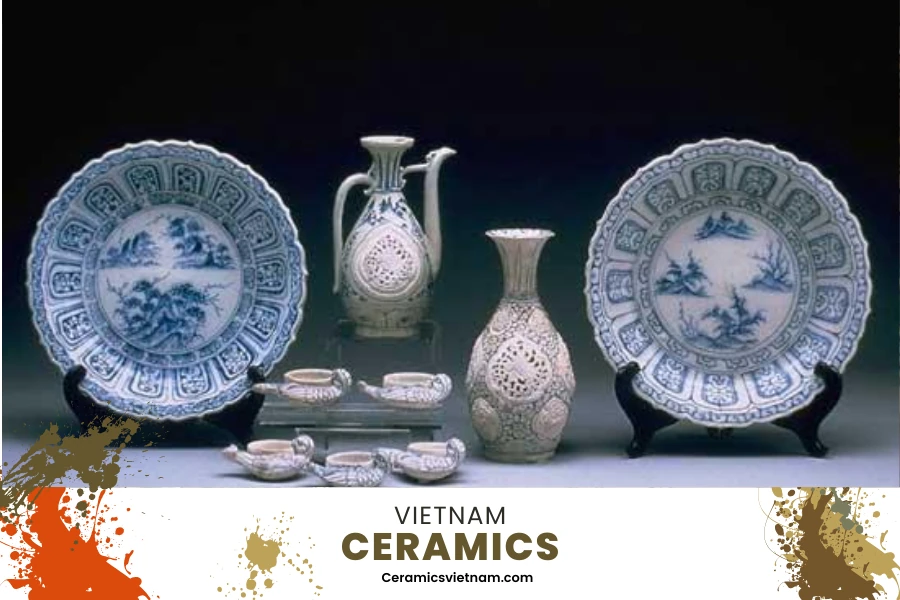
Guide to distinguishing between English and Vietnamese porcelain
Vietnamese Porcelain
- Traditional Techniques: Vietnamese porcelain often exhibits traditional techniques such as hand-molding and basket-weave molds.
- Earthen Tones: Early Vietnamese pottery is characterized by earthy tones, often with unglazed finishes or minimal glazing.
- Cultural Motifs: Vietnamese porcelain frequently features motifs inspired by rural life, including flora, fauna, and daily activities.
- Distinctive Brands: Notable Vietnamese pottery brands include Chu Dau and Bat Trang, known for their unique styles and traditional craftsmanship.
British Porcelain
- Industrial Influence: British porcelain, especially in the 18th century, was influenced by industrialization and mass production techniques.
- Refined Designs: British porcelain tends to feature refined designs with intricate detailing, often inspired by nature and classical motifs.
- Brand Heritage: Renowned British porcelain brands like Wedgwood and Royal Albert have a long history of producing high-quality ceramics for aristocratic and royal clientele.
- Elegant Aesthetics: British porcelain is characterized by its elegant aesthetics, sophisticated color palettes, and luxurious finishes.
In summary, while Vietnamese porcelain emphasizes traditional craftsmanship and cultural motifs, British porcelain is known for its refined designs, industrial influence, and aristocratic heritage

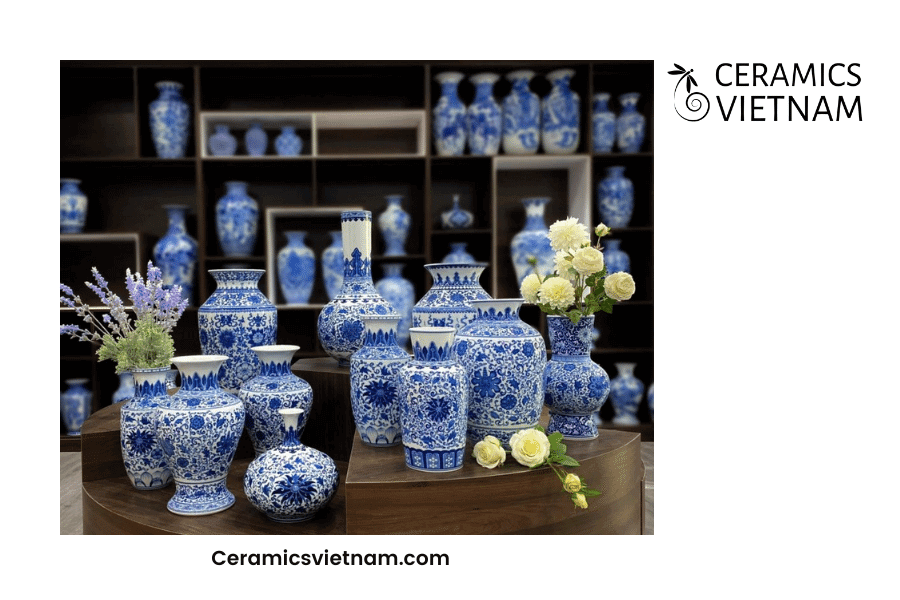










Leave a reply